Hey gang, I’m off on vacation, my first since I started this Substack on March 1st. This is technically a repost because I shared an earlier version of this on Tumblr several years ago. However, that Tumblr was something I was deliberately hiding, back when I was not writing publicly, and it’s Halloween season, so I thought you might enjoy this. See you next week!
I did not see an A Nightmare on Elm Street movie until I was in my 30s. There were a couple reasons for this. For one, I had always identified them as part of the schlocky 80s slasher craze that I saw as cheap, exploitative, and free of redeeming qualities - and not for no reason. For another, my name is Freddie, and I was a child in the 1980s, and you can imagine how that went for me. Literally every day for at least 10 years of my childhood I got “you mean like Freddy Krueger?!?!” (To which I would reply, no, my name is the far more tasteful Freddie.) It scarred me!
So the movies themselves were outside of my experience even as I had picked up a vague cultural memory of them in the way you do. When I happened to see the original on TV, at some point, I was genuinely and happily surprised. I’ll save my praise for that movie for the rankings. It’s enough to say that what I thought was the kind worst kind of trash turned out to be more interesting and inventive than I could have possible guessed.
So one year when I was settling in to my usual October routine of watching scary movies every night, I thought that I would finally expand my knowledge beyond the original and watch the rest. All of the rest. And from there I got the idea of ranking them. I will say… I went into this project really ready to come out with a nice contrarian take about how these movies are Good, Actually. I’m afraid I haven’t really succeeded. I think they each have their virtues, and some are better and some are worse, but if you asked me flat-out whether the Nightmare on Elm Street movies are generally good, the answer would be no. They are not generally good. But they are all interesting, in contrast to much of the slasher genre. After I wrote the original version of this piece I attempted to do the same project for the Friday the 13th movies, but literally could not get through them all, as all of them were shlocky (not necessarily a bad thing) but many were also tired, rote, and cynical. Freddy always surprises me.
(Oh, and SPOILERS throughout, but honestly these aren’t the kinds of movies that are hurt at all by seeing spoilers.)
9. A Nightmare on Elm Street 2: Freddy’s Revenge
Ugh. Uuuuuuuuuuugh.
If I had to pick one word to describe Freddy’s Revenge, it would be ugly. It’s visually ugly; though I have to imagine that the budget was higher than the original, given the original’s success, it looks cheap throughout, from the sets and effects down to the film stock. It’s also just kind of nasty, mean-spirited in a way that these movies usually aren’t. I know that sounds weird, but while Freddy Krueger is always cruel, the movies don’t generally have the nastiness that I see in this one, although I’m not sure I can convey that in words very well.
The premise is straightforward enough. Our hero (or “hero”) Jesse is a teen who lives in the site of the original troubles, 1048 Elm Street. His dreams are haunted, as one would expect. It turns out that Freddy is trying to use him as a vessel to return and take his revenge out on… well, teens. It’s always teens. And with the help of his girlfriend he tries to resist Freddy and save his own life and soul. There’s nothing particularly inventive about the setup, but I don’t particularly need there to be. I need cool dream shit and brutal Freddy kills.
The problem is that the protagonist is utterly unlikable, existentially unlikable. Not to be cruel but he looks weird, deeply wimpy and not in a way that really works. (He’s also half-clothed for a bizarre amount of screen time.) He’s just a personality vacuum, someone whose suffering is hard to root against because he’s such a simp. And the film does him no favors, with the killing having little of the originality common to the series. It’s a unhappy trudge of a film. Also this movie has the same basic issue as the (vastly superior, obviously) David Cronenberg Fly: you have to believe that in a very short period the beautiful girlfriend figure fell so, so in love with the protagonist that she would stand by him through a series of literal horrors. With Jeff Goldblum, I almost buy it. With this sap, I sure don’t.
I was surprised to learn after watching this that many people see it as a high point, and I expect there may be some howls in the comments for ranking it last. It’s true that there’s a gay subtext which is kind of interesting, but I don’t see that subtext balancing out the bad effects, wet blanket of a protagonist, and uninspired violence.
Incidentally, this is the first time, but not the last, that a more conventionally attractive and more popular teen than the protagonist comes across as the real hero. Grady, you deserved better.
How do you stop Freddy? With true love’s kiss plus torching the boiler room where he committed his crimes
8. A Nightmare on Elm Street 5: The Dream Child
It was inevitable that some of these movies would blend together, given that I was watching nine of them in a couple weeks. But that would be true no matter how much mental space I gave this one. In a franchise of interchangeable teens these ones are particularly interchangeable; in a series that constantly goes through the same tropes, they never seem more exhausted than they do here.
The premise is actually pretty cool: Freddy uses the unborn child of one of our previous heroines as his gateway into the real world, and that unborn child communicates with his mother through her dreams. But the premise can’t stand up to the general malaise that had settled into the franchise, and as we run through the same rhythms we’ve already run through before, it’s hard to keep the scenes from blending together with those from other movies. And that makes you try to remember basic series essentials through a fog; why is he after these particular teens, again?
Probably the most memorable elements are the bad green screen (easily more glaring than any effects issues in the then 5-year-old original) and a dinner sequence ripped straight out of Beetlejuice, which had released the previous year. I’m not sure I would say this entry is a “worse movie” than, say, number 6, but it’s easily the most forgettable of the bunch.
How do you stop Freddy? A dream child vomiting a flesh torpedo on him.
7. A Nightmare on Elm Street 4: the Dream Master
This entry in the series is, as I understand it, a fan favorite, but I find it something of a slog. A lot of that relates to the movie that came before it. Much of this movie is a joyless march towards killing off a bunch of characters that I had come to care about in the film before. (The fact that a major role was recast between the two films doesn’t help.) This one also features the most gratuitous and needlessly cruel killing in the whole series, which is a good or bad thing depending on what you come to these movies looking for. To me it was gross.
Still, it’s more meaningful and effective than the first two entries on this list. There’s an idea that’s interesting - if not fully baked - in that characters can, as they die, give their dream power to others. It’s connected to the previous film but still stands out. I liked it OK. And the final confrontation with Freddy is a standout.
It does, on the other hand, highlight how fast and loose these movies play their own rules. The basic idea (you fall asleep and Freddy will kill you in your dreams) is more of a gentle guideline than a rule. Sometimes Freddy can get you IRL. Here, we’ve got that usual confusion, plus the not-entirely-coherent dream powers, the wild implausibility of certain characters somehow winding up in high school together, and the always-funny premise of a bunch of suburban soccer parents participating in group murder by burning somebody alive.
Two things to note: first, there’s a dog named Jason, which can only be a funny wink at the rival Friday the 13th series. Second, one of the things I like about this movie is that it contains the rarest of creatures in movies: a popular, handsome, football-playing jock… who has a heart of gold! Almost any movie starring teens, particularly in the 80s, portrays anybody who is conventionally attractive and successful as being a remorseless sociopath. This guy’s a sweetie.
How do you stop Freddy? Force him to see his reflection.
6. Wes Craven’s New Nightmare
The meta one. I was somewhat surprised to see that this came out before Scream, another Wes Craven joint, given how much it reflects the postmodern sensibility that has overtaken horror movies. I have a pretty high tolerance for those things, and this is certainly not a bad entry. But I just don’t think meta theatrics are a good match with this series; Freddy is already a pretty comedic character, often to the detriment of the movies, and the plot here is so distinct from a traditional slasher that it undermines the typical meta setup of exemplifying conventions in order to comment on them.
It’s immediately apparent that this is a higher-budget, higher-production values affair than most. It’s also much more naturalistic/conventional than most of the films, with very little of the mannered behavior and outsized acting that are common to the series. That’s in keeping with the conceit: this is not a movie set in the Freddy universe, but rather real life where Freddy movies are made. Heather Langenkamp is the actress who played Nancy in the original, and here she’s playing Heather Langenkamp as a character. Robert Englund is the actor who portrays Freddy and he is here portraying the actor who plays Freddy, as Wes Craven in turn plays himself, etc. You’ve probably already got the idea.
This allows them to play with the mythology a little bit, although as ever it’s all kind of vague. (Freddy is somehow tied to earthquakes now.) One clear change is that Freddy is much less the court jester of the underworld and more of a generally evil presence, in keeping, Wikipedia tells me, with Craven’s original vision. It is true that this makes him scarier, though whether it makes him better is a separate question. Still, by the last half hour or so you’re just in the climax of a Freddy movie. The meta stylings kind of fall away when you’ve got Nancy (sorry, Heather) fending off Freddy once again.
The worst thing I can say about this one - aside from my opinion on the incredibly sucky child actor who plays the son - is that it isn’t as clever as it thinks it is. It deploys these postmodern conceits but doesn’t take them far enough. Craven would achieve far greater heights two years later with Scream. All in all, though, it’s a competently made and generally entertaining entry.
How do you stop Freddy?: Burn him in a dream furnace.
5. Freddy’s Dead: the Final Nightmare
Freddy’s Dead took the series into the 90s and out of anything resembling conventional cinematic sense. This is, no doubt about it, the weirdest entry in a weird series. It’s weird in ways I have a hard time describing.
I guess the best I can do is to say that the whole thing is affected, mannered, in a strange style. The acting, certainly, is kind of hyper and frenetic. The movie wears its 90s heart on its sleeve, which results in a lot of quick cuts and jarring transitions. (It also results in Breckin Meyer.) There’s several celebrity cameos which universally cause the movie to come to a screeching halt. The plot is convoluted even by the standards of the series.
And yet its weirdness is its strength. It lets its freak flag fly.
The story begins with an odd Children of Men style twist, which doesn’t really go anywhere. John is the last child of Springwood, an amnesiac who can’t remember why he’s fleeing Springwood. He finds himself at a “shelter” - it seems to me to be more of a halfway house or psychiatric hospital but they call it a shelter - where he makes three friends. Each of them has been abused in a different way, one physically, one sexually, one emotionally. (This presumably is meant to function as some kind of allegory but whatever its thematic function it dies on the vine.) He also meets a female doctor who (in a blatant retcon given that the Dream Child was a boy) is unknowingly Freddy Krueger’s daughter, as well as a psychiatrist played by Yaphet Kotto who conveniently enough is an expert on dreams. The teens travel to Springwood to try and solve the mystery of John’s amnesia, which goes as well for some of the side characters as you’d expect. Once we’ve entered the final acts, we go through the standard business of fighting Freddy - standard, that is, except for FreddyVision.
Yes, the last half hour or so of this film is in 3D. I did not watch it in 3D, but there was no doubt when it shifted to that mode, as the film embraces every 3D movie cliche you can think of, pushing objects into the frame constantly for no good reason. There was also no doubt when it went into 3D mode because our protagonist puts on 3D glasses at that point in the movie herself, an action which is given a half-assed justification that goes nowhere at all. A loopy movie gets even loopier when we’re in 3D land.
I certainly can’t call this a good movie. It’s 90s-ness grates (and that’s coming from someone with crippling nostalgia for the 90s) and the film is more often than not just kind of incoherent. The awkward celebrity cameos do it no favors. But it is a profoundly interesting movie, just as a text, and I recommend watching it for that if nothing else.
How do you stop Freddy?: Drag him into the real world and stick a pipe bomb in his chest
4. A Nightmare on Elm Street (2010)
I confess I was prepared to hate this one. Wes Craven was not down with this one, I hate reboot culture, I dislike the new more “realistic” look of Freddy’s burns, and not having Robert Englund in it - if in a cameo if nothing else - is egregious. And it was produced by Michael Bay, no less. And yet I have to admit that this is a legitimately good movie, if somewhat lacking in heart.
This is not just a reboot but a pretty faithful remake of the original film. We’ve still got a heroine named Nancy, we’ve got teens getting murdered in their sleep, we’ve got a dark connection between the kids, their parents, and Freddy. This one makes the subtext text and turns Freddy from a child murderer into a child molester. (The film also introduces and then swiftly discards ambiguity about Freddy’s guilt.) There’s much more investigating in this one, but generally we go through the beats of the original, which is good because the original is good. And it’s all very well made. You can see the advances in cinematic technology written all over this one, although at times Jackie Earle Haley’s CG face looks a little too rendered. The cast is top notch; Rooney Mara plays our heroine (after a fake out where we assume it’s another character, although anyone familiar with the story would see that coming). Mara is good here, as she is in anything she’s in. The conspiracy of the parents is laid out well.
And - I have to say - I was so relieved to see one of these movies finally lean into the “must stay awake or die” theme. It’s such a good hook, and yet for as much as there are scenes of people popping caffeine pills sprinkled throughout the series, this one is the only one to really play that angle sufficiently. All in all, this is a legitimately quite good movie, which I won’t say for the movie that comes after it on this list. (One goofy bit involves the plot contrivances that the series has always had to come up with to get the characters to fall asleep and be vulnerable to Freddy. Here they’re particularly absurd, with one character falling asleep while at the funeral of one of her best friends and another falling asleep while swimming laps.)
So if this movie is so well-made, why’s it here at #4 instead of higher? It’s a very classy movie… too classy. It lacks the spirit and inventiveness of the best parts of the series. It’s self-consciously adult. (Always with the F word with this one.) Freddy is darker, more sinister, and legitimately scarier - and thus less interesting. There’s lots of scary, dark, remorseless monsters in horror movies; making Freddy another one of them robs the character of some of his dramatic interest, and I say that as someone who prefers when they tone Freddy down. If you asked me to pick one of these movies to show to a random person, I would probably pick this one as the most likely crowd-pleaser. But it’s far from my favorite.
How do you stop Freddy? Drag him into the real world and slit his throat with the blade from a paper cutter.
3. Freddy vs. Jason
Golly! There’s a lot going on here.
This movie came out in 2003, and it’s immediately apparent that it’s from a different era than its 80s and 90s predecessors. Though it came out later than those films, I get much more of an I Know What You Did Last Summer/Final Destination vibe than I do a Freddy movie. It’s kind of madcap and bravura, with extra ridiculous kills and lots of excellent gratuitous horror movie nudity. (Forgive me but there are some truly great slasher movie tits in this one.) Oh, and Jason’s in it. That’s probably important.
One movie that it’s not like is Scream, even though that film influenced almost every horror movie that came after it. I say that because this movie is utterly without postmodernism, meta-theatrics, or knowingness. It was legitimately very refreshing to find myself watching a slasher movie where the characters did not know that they were in a movie. Though it’s utterly soulless, there’s something admirable about this movie’s dedication to the tropes of slasher movies, unironically expressed. It’s like Scream never happened.
This is a film that features the line “Listen to yourself, you’re hanging on to that psychobabble bullshit like it’s some kind of security blanket, man.”
It’s all kind of rollicking and breezy and fun. There’s some kind of convoluted rigmarole where the fear of Jason’s victims are the fuel that brings back Freddy, but I won’t bother to explain it because even the movie itself can’t bother to be very invested in this transparent pretense. It’s Freddy vs Jason, that’s what we paid to see. Their showdowns are predictably anticlimactic, but I feel with this one you’re really along for a very laid back ride. A stoner character is inserted into the film so offhand and casually that I sort of forgot he hadn’t been in it since the beginning. And there’s a rave in a cornfield that must be seen to be believed. This is the one that I’d be most likely to put on as something to have going in the background.
Also, and forgive me for repeating the term, if you’re interested in seeing a member of Destiny’s Child call Freddy Krueger a “faggot,” this is the movie for you.
How to stop Freddy? Mutually dismembered by/with Jason then blown up then stabbed in the heart with his own glove then decapitated.
2. A Nightmare on Elm Street 3: the Dream Warriors
This is a good’un. Not as weird as 6, not as grim as 4, not as ridiculous as 8, it’s the movie where I felt that the filmmakers best understood the material and how to keep it fresh. It preserves the formula while expanding the universe, which I like quite a bit.
In the movie, a group of teens (it’s always teens) find themselves locked up in the same mental hospital. They take medications, they do group therapy, they complain about their living conditions. And they all dream about Freddy. Our heroine Kristen, played by Patricia Arquette, knows something is going on, but can’t find a sympathetic ear… until she meets the new therapist intern, Nancy Thompson from the original! Against the directives of her superiors, Nancy informs the teens of Freddy and his desire for revenge, while he picks them off one by one. They come to learn that each has their own dream power, with Kristen capable of bringing others into her dream with her. They set out to work together to take Freddy down.
If I’m laying out a lot of plot summary it’s only because I think the plot is really good. The powers are a nice touch and they lend the conflicts with Freddy more drama and unexpected moments. And the callbacks to the original are never forced; Nancy’s police officer father comes back in a way that is natural and fits the plot nicely.
Freddy’s powers remain as vague as ever, and there are some grating one liners. (”Welcome to prime time, bitch.”) This is peak heinous 80s hair era. I find the origin they establish of Freddy not to be dark and disturbing, as they surely intended, but just gross. Still, this is clearly a highlight of the series, one that I thought hard about ranking #1, and it’s recommended even for people who aren’t interested in these movies for the novelty/nostalgia.
How to Kill Freddy? Burying his bones in “consecrated ground,” which in the logic of this movie means in a junkyard.
1. A Nightmare on Elm Street
The one that started it all is also the best one. What I had assumed for so long to be cheap and exploitative trash is actually a deft, original film that’s well crafted despite its meager budget. The main character of Nancy is played by Heather Langenkamp with real verve, making her more than another disposable scream queen. And Johnny Depp is quite the heartthrob.
I think this movie, and this series, suffers a bit in that it was so influential that it seems cliched to those who see it a generation after it premiered. The trope of dreams and their power is exploited for better or worse in the series as a whole, but here it seems vital and inventive, giving the creators far more to work with than the Halloween and Friday the 13th movies had, with their need to ultimately always to be about a silent and remorseless killer who advances ever onward. I do tend to prefer Freddy when he’s played with a little more restraint, but his personality and jokes at least set him apart from the raft of stoic killers in the movies. And the dream logic means his methods of violence are myriad.
From the wrongly accused subplot to the persistent imagery of subtle sexual violence, like Freddy’s glove emerging from between Nancy’s legs, this one just clicks for me. It’s well worth its place in the canon.
How to Kill Freddy? Stop believing in him… but he’ll always come back for more.




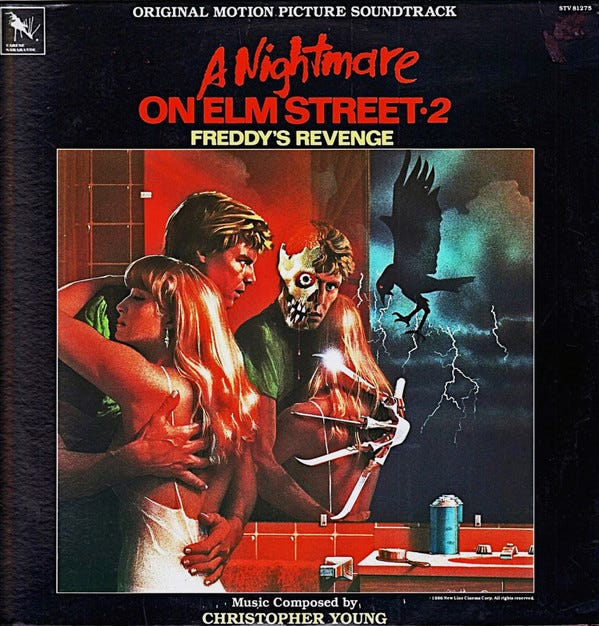
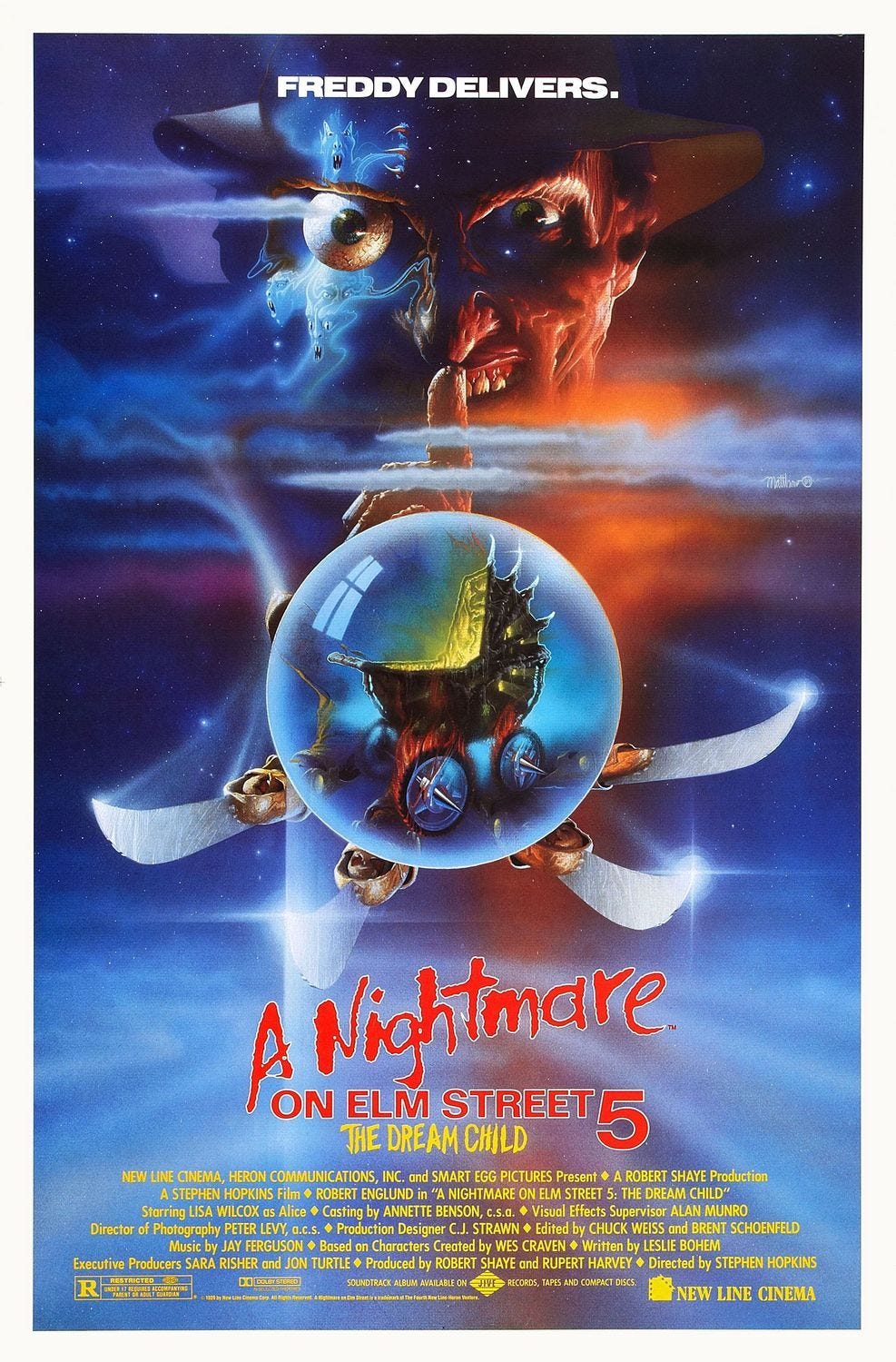
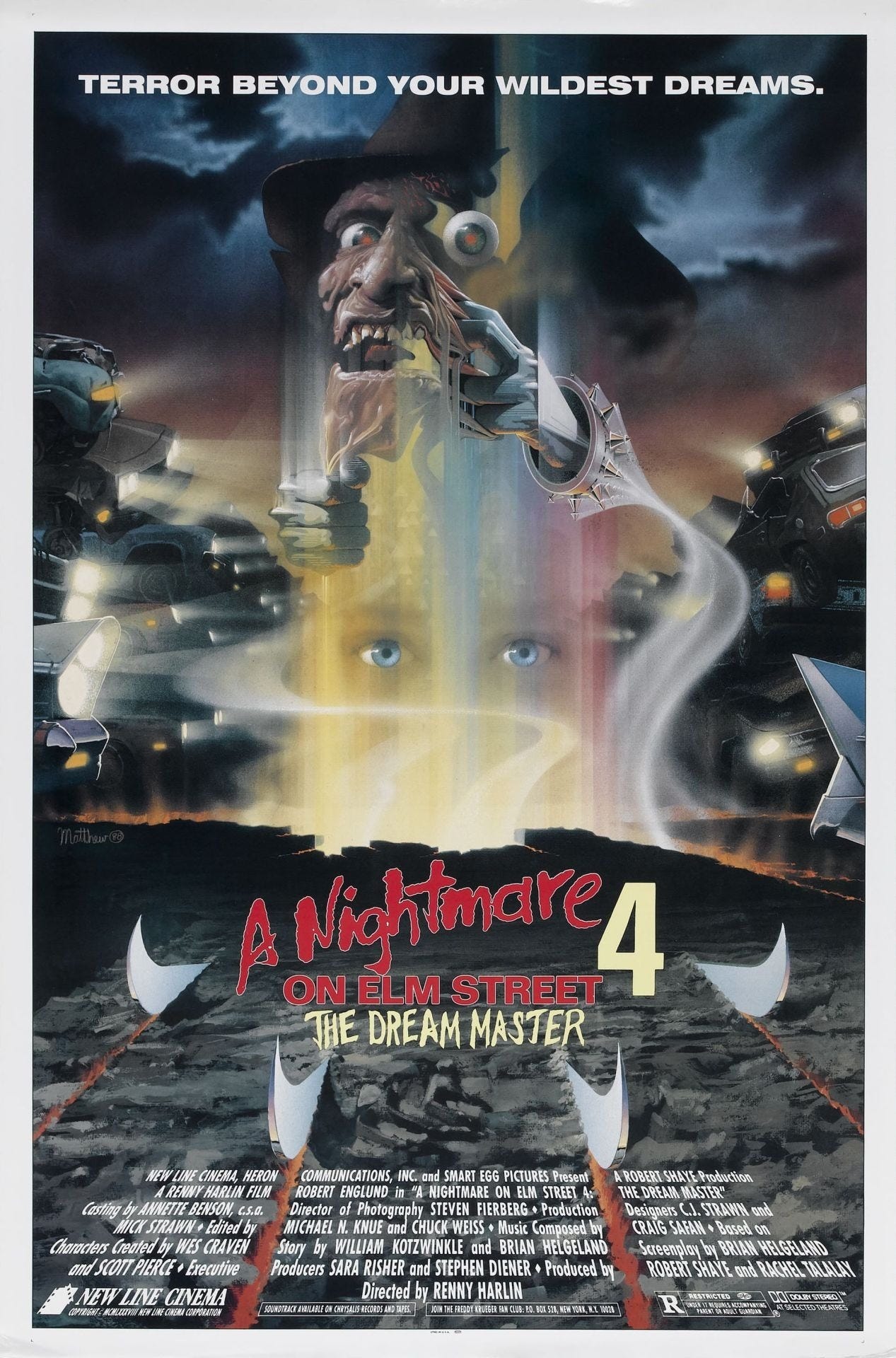
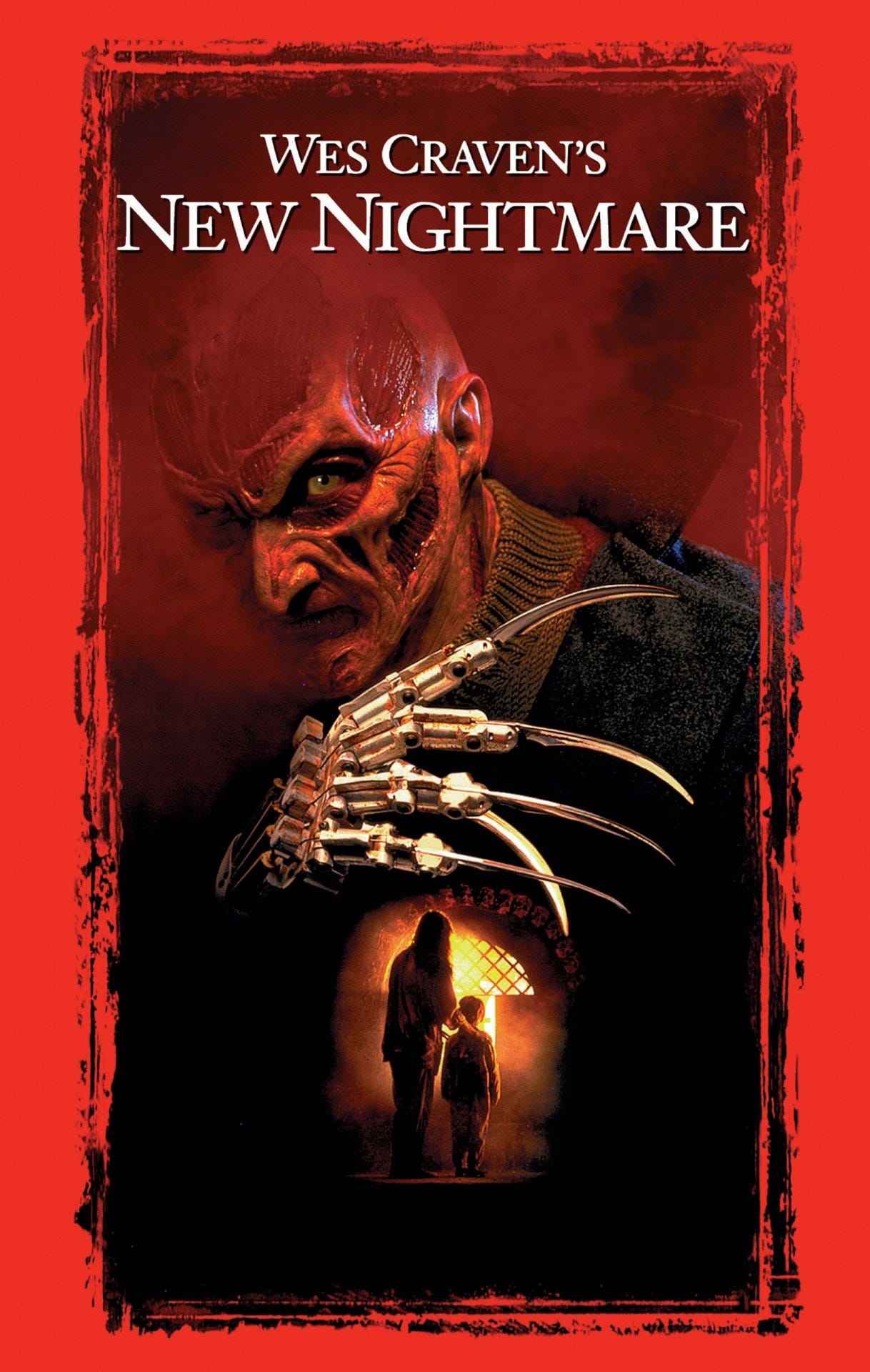
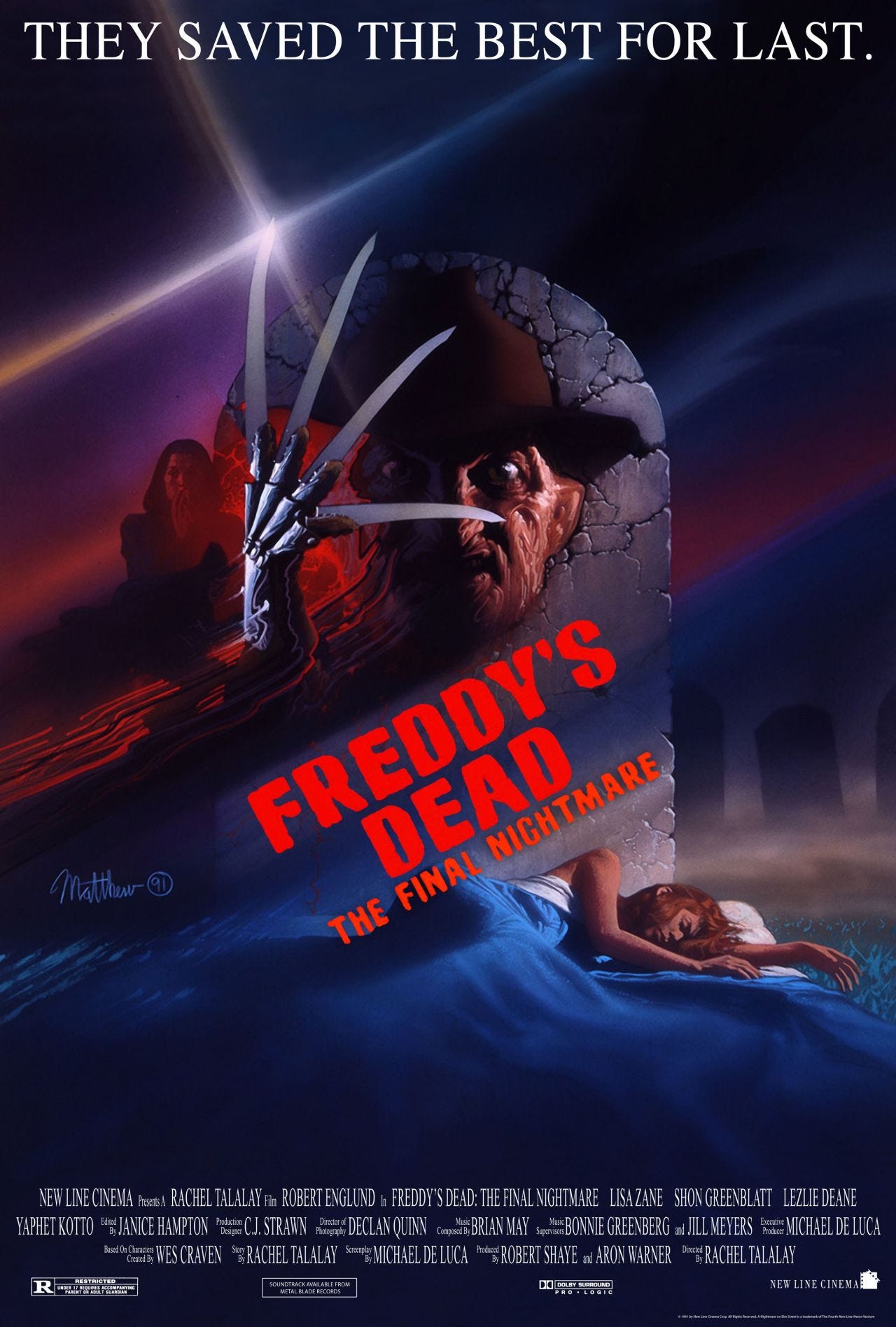
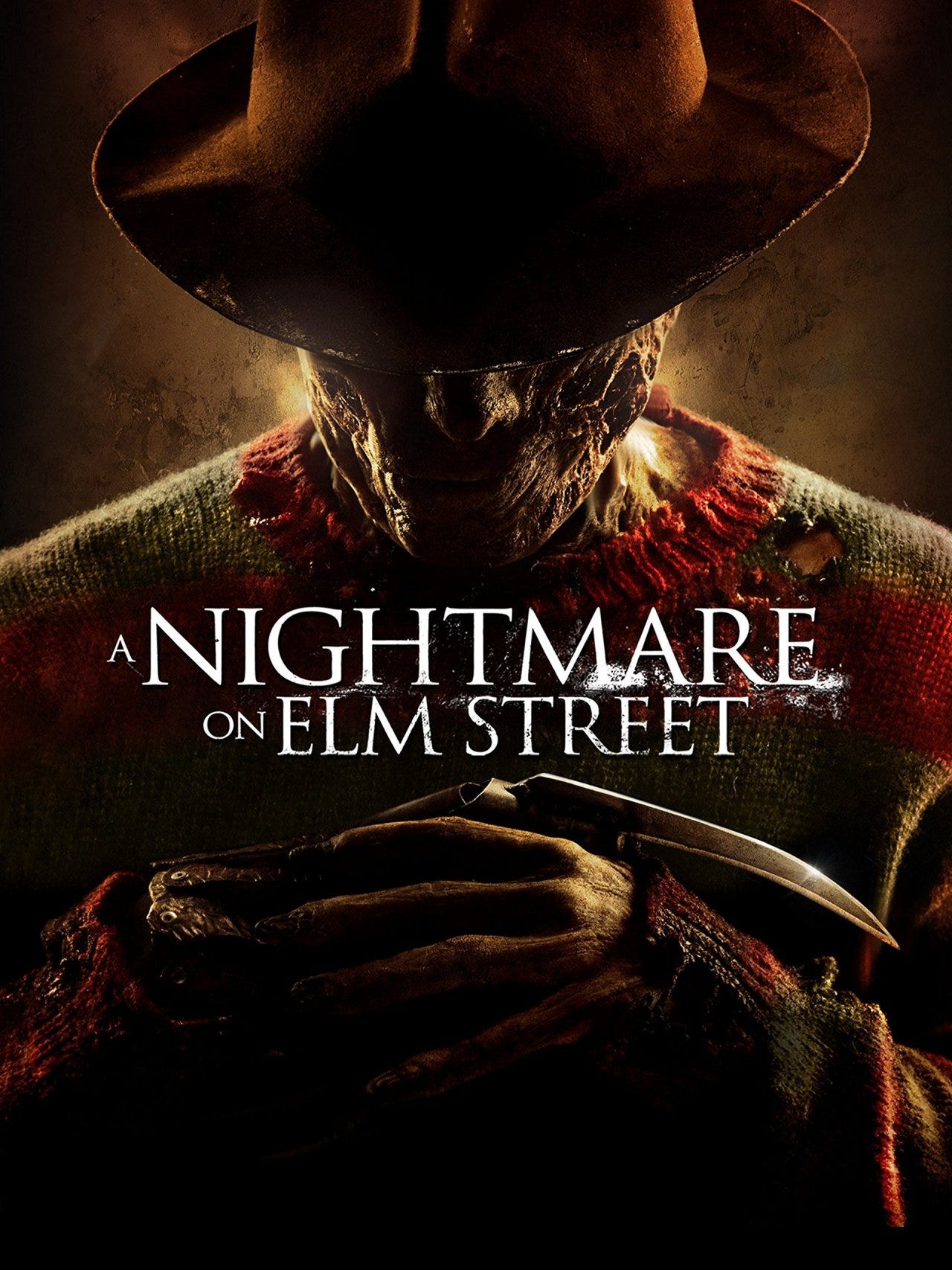
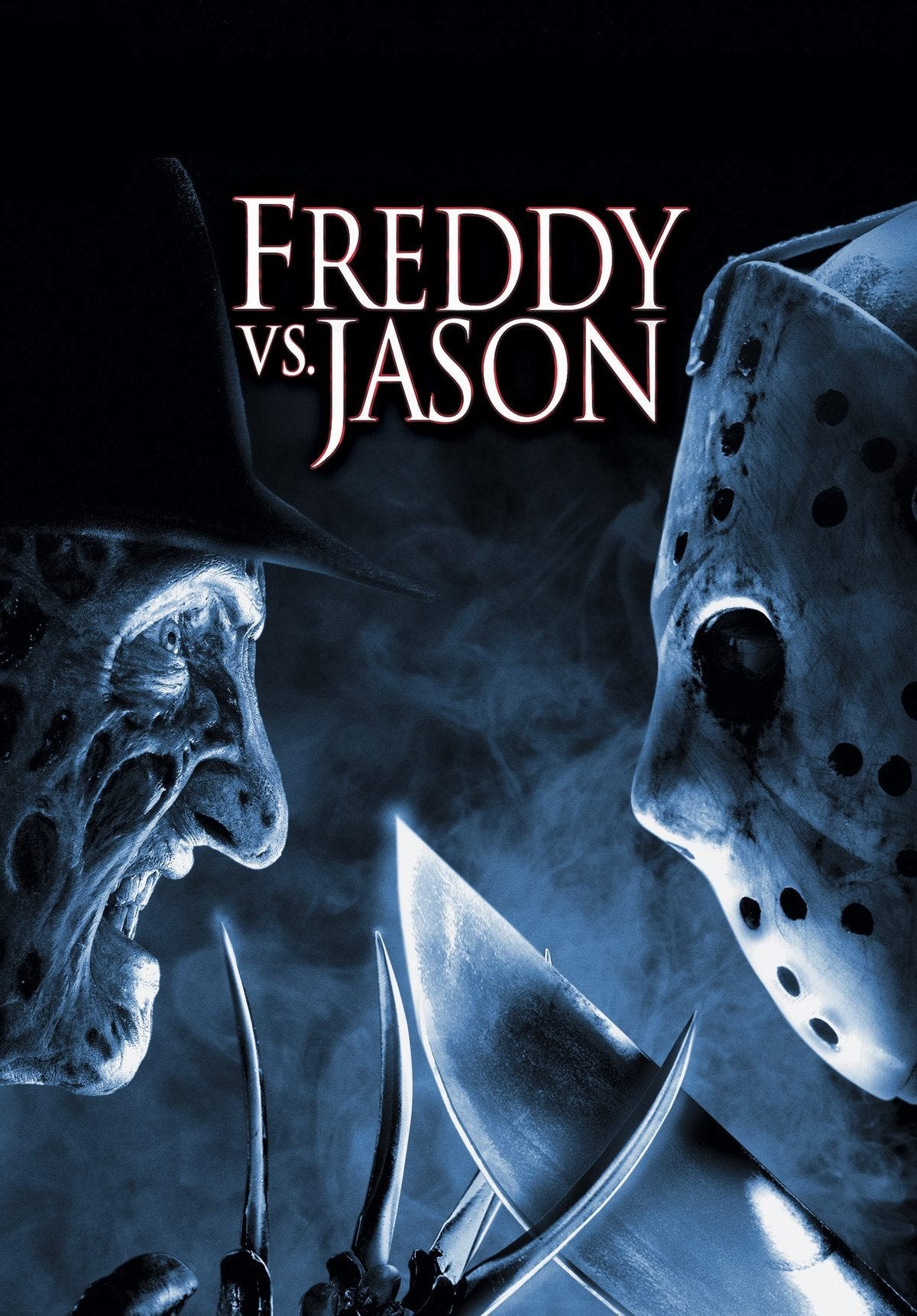
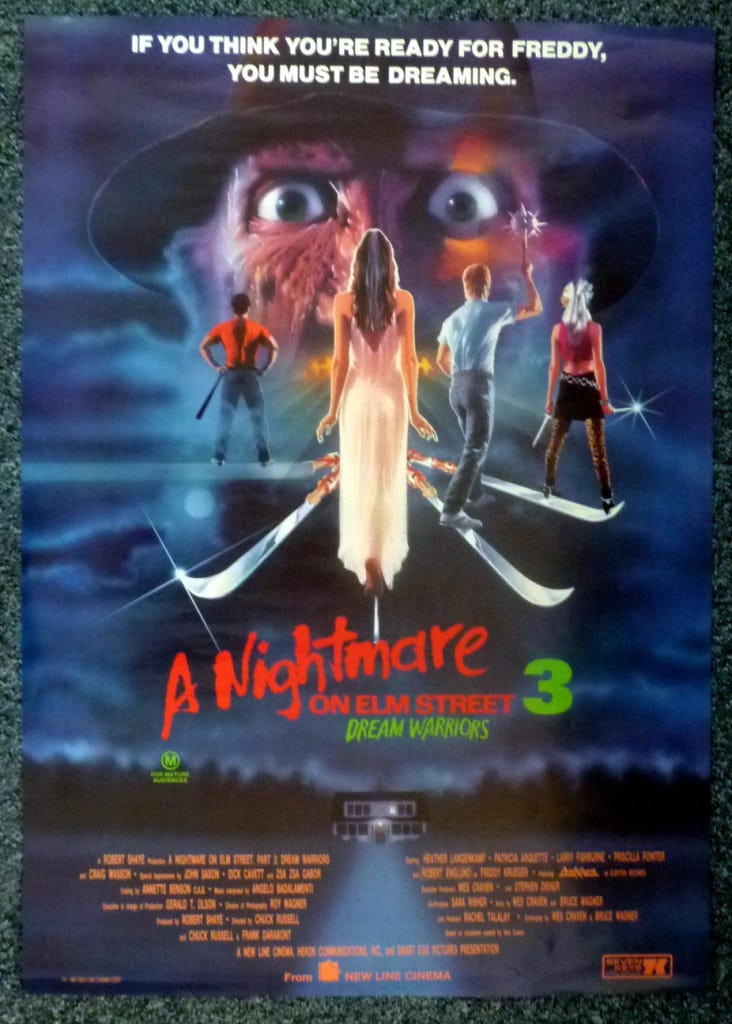
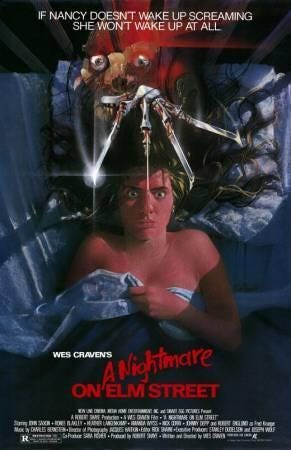
Freddie's tastes in art are just so different than mine ...
> I say that because this movie is utterly without postmodernism, meta-theatrics, or knowingness. It was legitimately very refreshing to find myself watching a slasher movie where the characters did not know that they were in a movie.
I watched the new Halloween movie the other night. It wasn't very good but I had the same reaction - it's actually novel and interesting at this point to see a slasher movie without the incredibly tired jokey Whedonspeak. The dialogue is bad but the characters say what they mean and deliver it straightforwardly. There's even a rousing speech that riles up a mob played totally straight. I'm so tired of incessant viewer self-insert dialogue (even in stuff like Star Wars that's supposed to be operatic and heightened) that I give them credit for just making a straightforward bad movie.